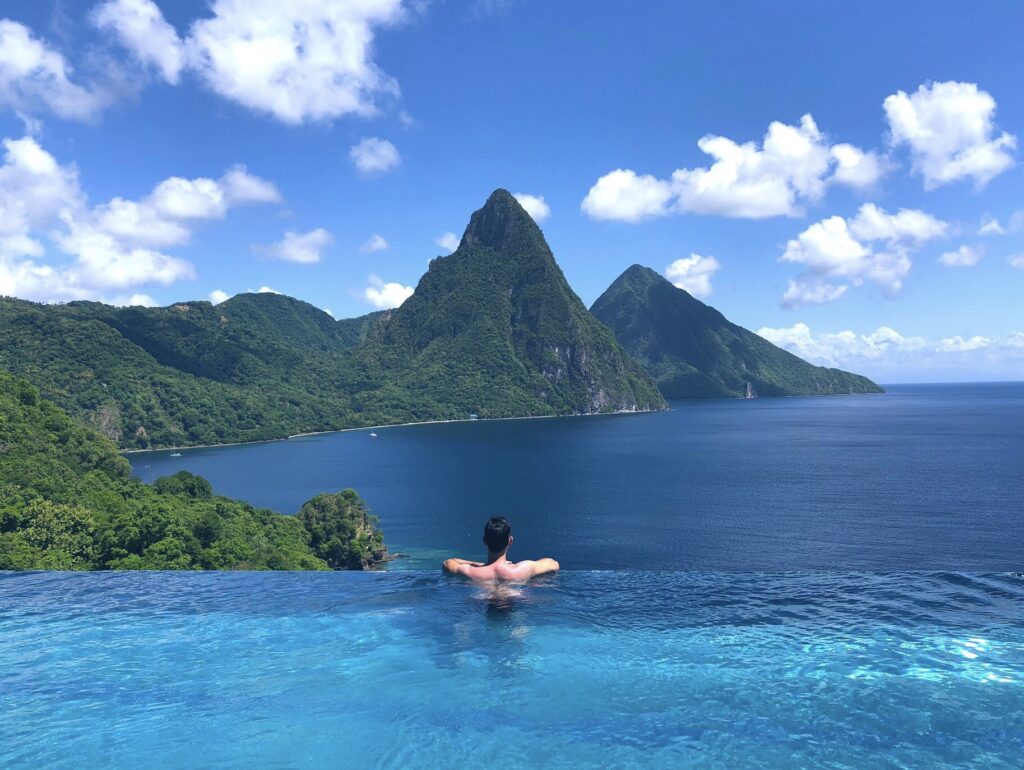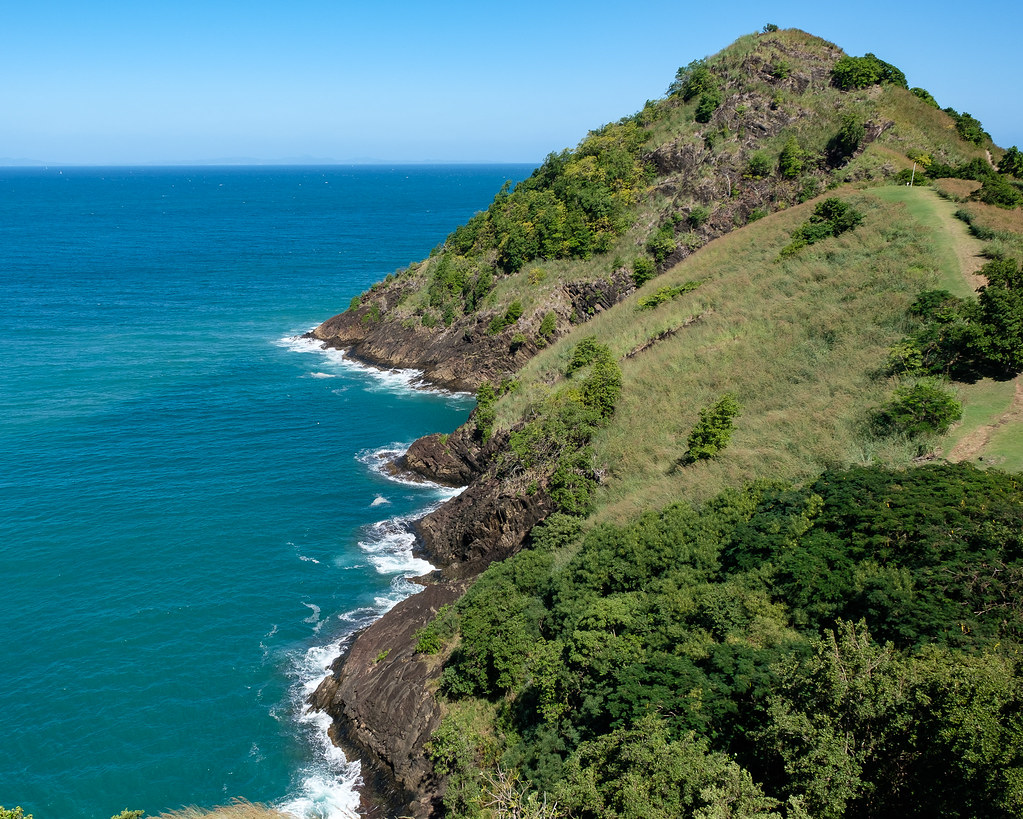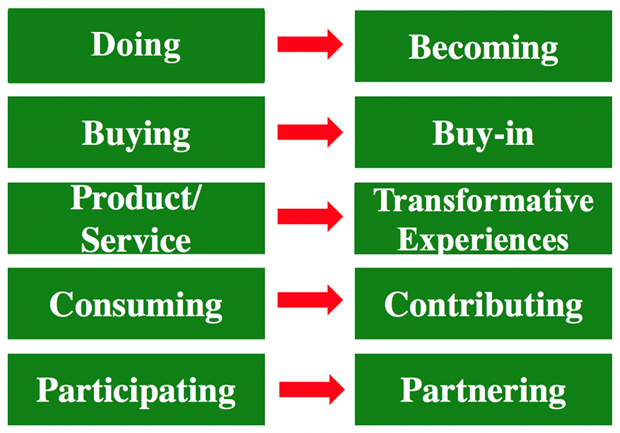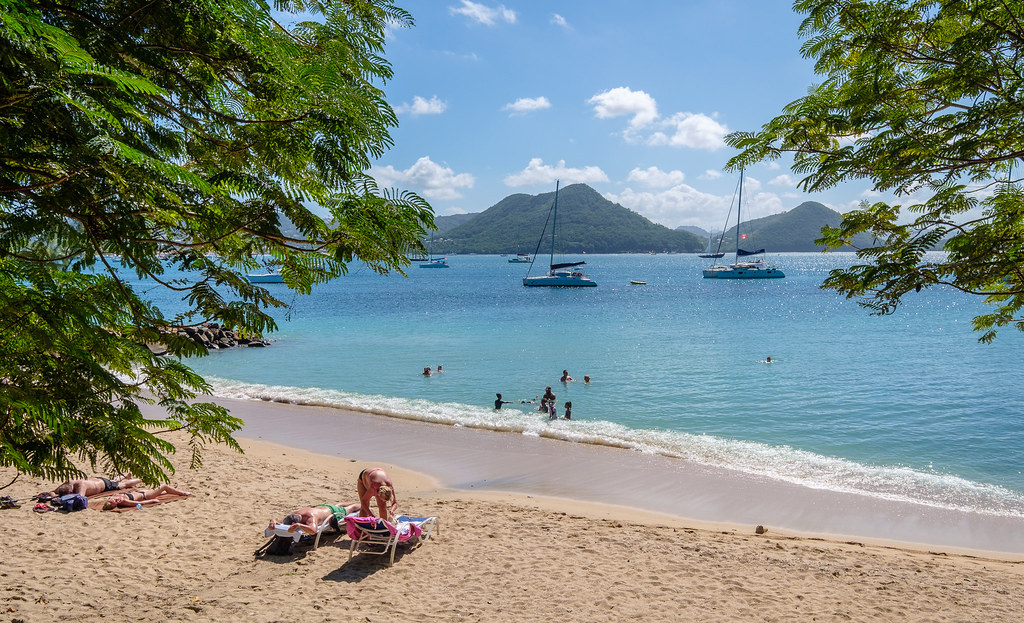Share
Travellers of old were squarely in the camp of the ‘old tourism’ – sun, sand and sea ‘mass’ tourism. It has been natural for Saint Lucia to concentrate activities on the mild North West Coast that is brimming with sun, sand and calm seas. Like many Caribbean islands, Saint Lucia had little choice but to develop its ‘mild’ West Coast, and focus on ‘sun, sand and sea’ tourism. This is what their guests wanted. Tours, attractions, Water and land-based sport, spas and wellness were later added to the mix.
The North West Coast of Saint Lucia – from Gros Islet to Soufriere – is, and has always been, the island’s tourism mecca. Soufriere is home of the islands’ majestic Pitons, sulphur springs, the world’s only drive in volcano, rich rain forests, cascading waterfalls, botanical gardens, Anse Chastanet, Sugar Beach, Volga Nature Trail, Au Poye Park and World Heritage Site Landmarks. There are also incredible man-made tourism attractions in both the West and the North Coasts, such as luxury hotels (e.g. Jade Mountain, Sandals), the Rodney Bay marina, many fine restaurants, rich night-life, and a hub of activities and events, e.g. Saint Lucia Jazz.

The Wild and Forgotten Coasts of Saint Lucia
At the same time, the ‘Wild’ East coast of many islands remained marginalised and ‘excluded’ from mainstream, mass tourism.
In pursuing tourism development on the forgotten ‘Wild’ coast of Saint Lucia, there is always the danger of mimicking what is viewed as the successful development of the West coasts. The Wild South East Coast was not only forgotten, but also, at the time, not considered ‘worthy’ of tourism development. In this regard, it is also natural for communities along the South East Coast to compare themselves with the North West and to believe that opportunities are somehow linked to what the ‘offer’ is on the North West Coast.

Governments and Local Communities Want More
Today, both governments and local communities in Saint Lucia want a more inclusive type of development – a development where “the benefits generated from tourism are as widely distributed as possible throughout the nation and among local communities” (Saint Lucia National Tourism Policy 2003).
The needs, wants and desires of host communities and governments to protect and preserve their environments and cultures, perfectly match the needs and desires of the ‘new travellers’.
‘New’ Travellers Want More
Leve Global firmly believes that it is the changing customers that will change the face of travel and tourism. Indeed, it is these new customers that are in the driver’s seat of the New Travel Paradigm.
While travellers of old were happy to be an unidentified mass, travellers today are fiercely individual; they are demanding, knowledgeable, younger and more connected. Travellers want more. They are environmentally-friendly and many have become environmental activists. Customers are responding to global warming and other environmental threats by radically changing behaviour – avoiding meat, aiming for ‘clean’, plant-based ingredients and supplies; choosing electric cars over the combustion engine; opting for healthy and wholesome choices; and making demands on governments to take radical steps to stem the tide of global warming.
Travellers do not just want to come, visit and take photos. They want to be transformed by the travel experience; to become more educated; more moved; and inspired. They are keen to buy-in, to contribute and to being a part of a wholesome, responsible travel experience. Here’s how travellers are changing.
Changing Customers

(Source: Tourism Intelligence International, 2022)
New Travellers and Local Communities want Responsible Tourism
Today, the demand by the ‘new travellers’ for responsible, real, natural, untouched, environmentally-friendly, authentic and different tourism experiences, has opened up a whole new ‘ball game’ for the Wild and pristine South East Coastal Communities of Saint Lucia.
The needs, wants and desires of host communities and governments to protect and preserve their environments and cultures, perfectly match the needs and desires of the ‘new travellers’. This nexus of wants between travellers and locals provide an optimal basis for the development of Responsible Tourism in the South East Coast. The figure below shows how the needs and aspirations of our ‘new’ and responsible travellers are changing.
The four core elements of Responsible Tourism are: People, Planet, Profit, and Plant.
The Core Elements of Responsible Tourism

(Source: Tourism Intelligence International, 2022)
People
People are at the heart of responsible tourism – travellers and local community members, tour guides, accommodation owners, etc. Responsible tourism is not just about saving birds and bees. Responsible tourism has its primary duty to the people of Saint Lucia. Residents of the South East Coast are the First Tourists and the principal beneficiaries of tourism development. Responsible tourism will ensure that development of the sector is done in a manner that ensures decent work and fair wages for all in the sector; that no one is left behind as the sector progresses; that the communities benefit from tourism development; that the Saint Lucian culture and unique way of life is preserved; that there is fair trade; and that Saint Lucians can freely and fairly enjoy and take pride in their country’s rich and unique environment.
At the same time, responsible tourism is not found in a park or protected area. Residents have a RESPONSIBILITY to care for the environment. Caring for the environment must become part of the DNA of EVERY resident. A tall order, but THIS is what will generate the success, employment opportunities, sustainability, profitability and regeneration that we all so desperately need. Responsible Tourism is therefore an ACT, not just a nice word or policy.
Travellers are a critical human/people component of Responsible travel and are expected to treat the environment and cultures with which they interact in a responsible manner.

Planet
Responsible tourism also has an obligation to protect the planet. The Wild South East Coast’s natural environment (water, wind, wood, and wildlife) forms the basis of the tourism experience. As such, the South East Coast’s natural environment is indispensable to tourism development. It is therefore critical that all measures are put in place to ensure the preservation of the natural environment.
Product and Plant
A responsible tourism sector must ensure that the physical or built tourism products are complementary to, and beneficial, for both the people and its environment (planet). Product development must take place in a deliberate manner; the physical plant must be developed with resilience in mind; the product must adhere to strict standards (from idea to implementation); product development should consider the impacts on the people and the environment; and must attract the kinds of investors and investments suitable for the area.

Profit
Profit is a key and indispensable element of responsible tourism development. Responsible tourism only becomes ‘real’ when Saint Lucians can feel the benefits of tourism in their pockets and on their tables; and when businesses consistently make profits, so that they can survive and continue their operations. Until this happens, the sector cannot be considered Responsible or Resilient or Regenerative. The tourism sector needs to be an engine of economic growth that propels other sectors; that distributes profits to the far corners of society; that creates real opportunities for wealth-generation and entrepreneurship, particularly for the youth; and that creates decent work, fair wages, lasting profits, and possibilities for personal growth for all workers in the sector and for all community members.
Responsible Tourism is a Key Vehicle to Deliver Inclusive and Regenerative Growth
Responsible Tourism means that all aspects and all residents of Saint Lucia are enhanced because of tourism – a goal that is entirely consistent Saint Lucia’s National Medium Term Development Strategic Plan (2020-2023) which targets “sustainable and equitable development for all”.
Responsible Tourism is a critical vehicle to deliver Robust, Resilient, Inclusive and Regenerative Growth.
We would love to hear from you. Engage with us. Leave a comment below.
About the Author:
Dr. Auliana Poon
Managing Director / Chief Strategist
Leve Global

Dr. Auliana Poon heads Leve-Global. She is a courageous and passionate businesswoman. A trained Economist, Dr. Poon is a management consultant and strategist with a focus on trade and strategy development, competitiveness, climate adaptation, and regenerative economic growth. Dr. Poon led teams that developed innovative economic solutions for over 50 countries around the world including Australia, Barbados, the Bahamas, Iceland, Indonesia, Jamaica, Mauritius, Mozambique, Singapore, Seychelles, South Africa, Swaziland, Switzerland and Zambia.
An experienced researcher and analyst with fiercely independent thought, Dr Poon believes that developing countries cannot continue to compete with natural attributes of Sun, Sand, Sea, Oil and Natural Gas alone. For success and sustainability, more people-centred, culture-oriented, innovation-based, sustainability-directed, technology-focused and talent-driven approaches are needed.

